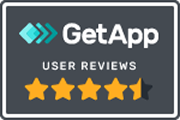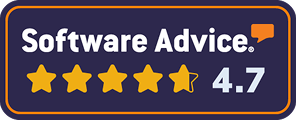LinkedIn's "Open to Work" feature has been an increasingly popular way for job seekers looking for new job opportunities, with over 10 million users having enabled this feature at some point.
{{quick-link-3="/sandbox/home-v3"}}
However, there is an open debate about whether using this feature benefits your job search or unintentionally hurts your chances by making candidates appear desperate.
Let’s analyze the pros and cons of leveraging LinkedIn's "Open to Work" tools so you can make an informed decision about what's suitable for your situation.
What is the "Open to Work" Feature on LinkedIn?
LinkedIn rolled out their "Open to Work" tools in 2020 as a way for members to discreetly signal to recruiters and their network that they are seeking new job opportunities.
There are two main components to LinkedIn's "Open to Work" feature:
- The Photo Frame
You can add a frame to your profile photo that says "Open to Work." This visually signals your job search status to anyone who views your profile.
- The "Open to Work" Setting
This setting lets premium account holders privately signal to recruiters that they are open to new opportunities without broadcasting them to their whole network.
Do you want to learn more tips for optimizing your LinkedIn profile with LinkedIn's Open to Work tools?
Read more: 9 Hacks to Optimize your LinkedIn Profile!
Who is Using "Open to Work"?
Since launching in 2020, over 10 million LinkedIn members have used one or both of the "Open to Work" signaling tools at some point.
As of October 2022, over 3 million members have the "Open to Work" photo frame enabled to signal recruiters.
Additionally, LinkedIn shared that members who enable "Open to Work" see an average 40% increase in InMails from recruiters.
With millions of people using these tools, they must lead to great job opportunities, right? Maybe, but there are also downsides to consider. Here are the pros and cons of using this feature.
The Pros of Using "Open to Work" on LinkedIn
Let's start with the potential benefits of leveraging LinkedIn's "Open to Work" tools:
Increased Visibility to Recruiters
Recruiters rely heavily on LinkedIn to source candidates for their open roles. Tools like the "Open to Work" settings allow recruiters to filter their searches for active job seekers easily.
By signaling your availability, you may see an uptick in recruiter outreach when you turn on "Open to Work." According to LinkedIn, members with this status enabled tend to receive 2x more InMails from recruiters.
Networking Opportunities
Using the "Open to Work" photo frame serves as a public signal to your connections that you're seeking a new role. This visibility can lead to more people sharing job opportunities and making introductions on your behalf.
Today, the 'Open to Work' feature can also boost remote networking. It opens doors to virtual introductions and online events, extending your network far beyond local boundaries. Additionally, by openly signaling your search status, people in your network may be more inclined to engage and offer support.
Confidence Boost
Publicly signaling your job search can actually give some candidates a morale boost. By putting yourself out there, you're taking control of your situation.
The increased outreach and support from your network can also validate your skills and experience, building confidence in the process.
The Cons of Using "Open to Work" on LinkedIn
However, there are also some potential downsides of leveraging LinkedIn's Open to Work tools that are important to consider:
Perceived as Unemployed
Recruiters and hiring managers who view your "Open to Work" signal may assume you are currently unemployed.
Unfortunately, unconscious bias against unemployed candidates still runs rampant. Recent data by Indeed show that 64% of recruiters believe unemployment can suggest outdated skills. This stigma could cause some hiring decision-makers to overlook your candidacy.
Risk of Spam Messages
While recruiter outreach may increase with "Open to Work" enabled, so can low-quality spam messages.
If you openly signal your availability, third-party recruiters and staffing agencies may blast messages to any qualified candidates as a sourcing tactic. Having to sift through more irrelevant opportunities can be annoying and time-consuming.
Privacy Concerns
Although you can limit your "Open to Work" status to be viewable by recruiters only, connections outside your network can still potentially see your job search signal.
For example, if any of your connections re-share an update of yours, it may also be visible to their entire network. Additionally, some have concerns about LinkedIn tracking and leveraging user data related to job loss or vulnerability.
Perceived as Desperate
There is a stigma that candidates who overly market or broadcast their availability can be perceived as desperate.
Hiring managers may wonder why you're so openly signaling if you're such a quality candidate. This perception could inadvertently hurt your candidacy with some hiring decision-makers. However, positioning yourself as an expert through mentorship opportunities can help boost your professional brand.
5 Tips for Using "Open to Work" Successfully
If you decide to leverage LinkedIn's Open to Work tools to align with your search approach, here are some best practices to employ:
1. Customize Your "Open to Work" Frame
Rather than just enabling the generic "Open to Work" frame, customize it to signal the roles or industries you're targeting.
For example, you could say, "Open to Work - Seeking Social Media Manager Roles." This level of specificity helps attract more relevant opportunities.
2. Expand Your Network
Focus on expanding your LinkedIn network in alignment with your target roles and companies. The broader your relevant network, the more introductions can be facilitated.
3. Be Selective
Rather than connecting with any random recruiter who reaches out with your "Open to Work" status enabled, be selective in who you engage with.
Vet opportunities thoroughly and focus your time on openings that are the best match for your background.
4. Monitor Privacy Settings
Occasionally, check your privacy settings on LinkedIn. There have been instances of settings randomly being changed during site updates.
Additionally, customize your settings so only recruiters can see your "Open to Work" status, avoiding visibility to your wider network.
5. Showcase Value
Ensure your LinkedIn profile and resume clearly convey the value you bring to potential employers. To make your resume stand out, you can upload a video resume to demonstrate your skills and make an impression.
This helps ensure you're evaluated on the merits of your candidacy rather than any assumptions based on your employment status.
Key Takeaways:
- LinkedIn's "Open to Work" tools signal members' job search status through profile photo frames and private settings.
- Over 10 million members have used "Open to Work" since it launched in 2020. Those with this feature saw an average 40% increase in recruiter InMails.
- Potential benefits include increased recruiter visibility, networking opportunities, and confidence building.
- However, downsides like unemployment stigma, privacy concerns, and desperation perceptions also exist.
- Customizing your settings, expanding your network, and showcasing value can help maximize your success with "Open to Work."
- Evaluate your preferences, risk tolerance, and target opportunities to decide if leveraging these tools makes sense.
When Should You Use "Open to Work"?
Deciding whether signaling your job search status provides net benefit depends significantly on your preferences and situation.
Here are some instances when enabling "Open to Work" may be advantageous:
- If You are a Passive Job Seeker
Even if you aren't urgently looking but are open to considering new opportunities, "Open to Work" can increase recruiter visibility and networking connections.
This "passive" search approach may uncover exciting options you wouldn't have otherwise discovered.
- You Work for a Company with a Strong Employer Brand
If you're employed by a highly reputable employer recognized in your industry, signaling your availability may not carry the same unemployment bias concerns.
Your employer brand serves as a validation point showcasing your skills and experience.
- You Have a Well-Established Network
For well-connected candidates with an expansive LinkedIn network, enabling "Open to Work" can facilitate introductions and referrals.
With a robust network, you may benefit from increased visibility.
- You are Confident
Job seekers who are extremely confident in conveying their value may want to use "Open to Work" quite openly and aggressively.
You dictate the narrative about your candidacy rather than letting others make assumptions.
When Should You Avoid "Open to Work"?
On the other hand, here are scenarios where abstaining from "Open to Work" is likely the prudent path:
- You are Unemployed
If you were recently laid off or terminated or are currently unemployed, having the "Open to Work" signal visible can exacerbate hiring bias.
Hiring managers may make unfair assumptions about unemployed candidates during initial screening.
- You’re Transitioning between Industries
If you're attempting to switch industries or pivot your career trajectory, avoid signaling your search proactively.
Since your experience doesn't directly align with your target field, additional bias may come into play.
- You Don’t Have Much Experience
Those early in their careers with fewer connections and less experience should be more cautious about how visible they are.
With fewer connections and less established brands, any stigma or bias could be magnified. When transitioning roles early on, it's important not to develop a "job hopper" reputation.
Read more: Top In-Demand Jobs in the UAE in 2025
Conclusion
LinkedIn's "Open to Work" signaling tools indisputably increase candidate visibility to the recruiter and hiring manager community, but heightened visibility can cut both ways. For passive job seekers, those in high-demand fields, or confident candidates with an established professional brand, enabling these settings may provide a net benefit by uncovering exciting new opportunities.
However, if you have concerns about unemployment bias, skills perception, privacy, or desperation stigmas, abstaining from these public signals may be prudent. Regardless of your approach, the most important element is showcasing the value you can bring to potential employers through a compelling profile and resume.








.webp)




